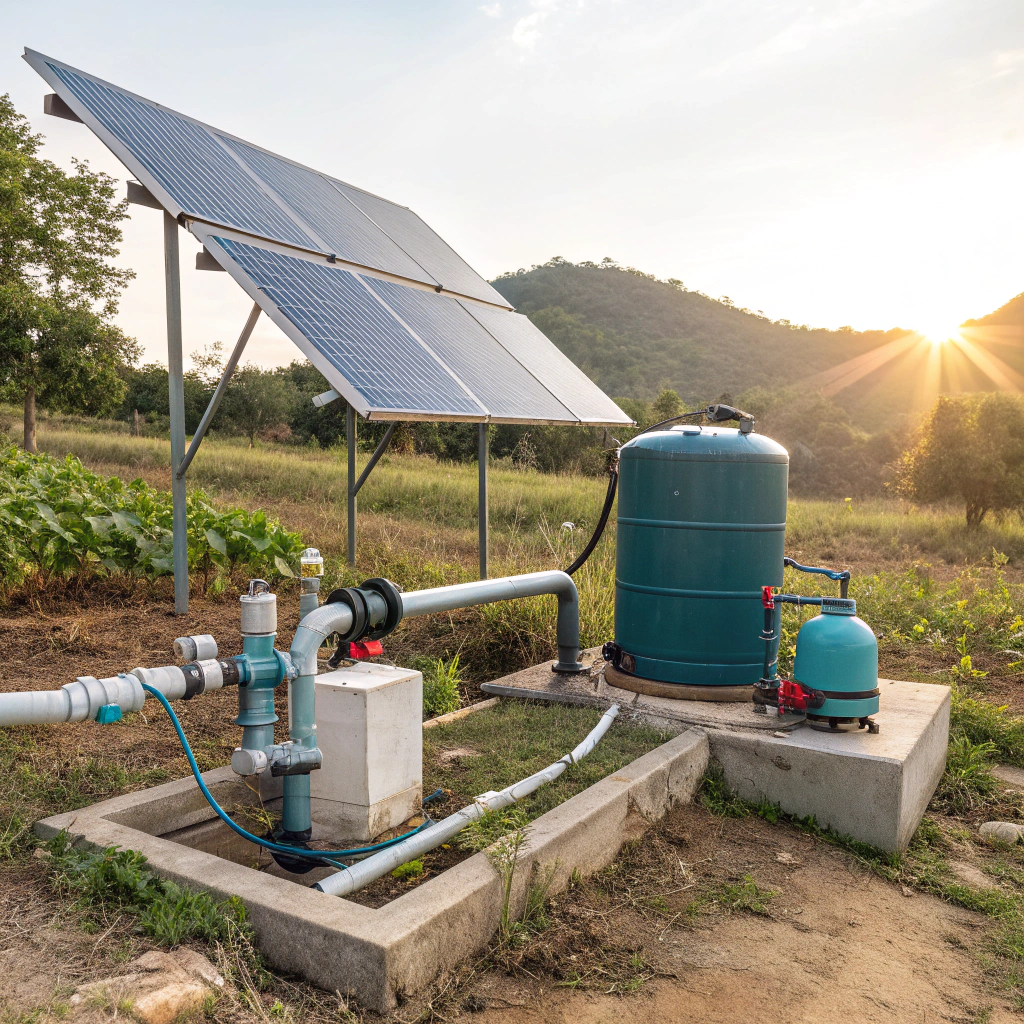Integration and Application Prospects of Solar Water Pumping Systems
•
Integration and Application Prospects of Solar Water Pumping Systems
Can solar water pumping systems revolutionize agricultural irrigation and water management?
With increasing water scarcity and rising energy costs, solar water pumping offers a sustainable solution. These systems harness sunlight to power pumps, reducing reliance on grid electricity and fossil fuels while lowering operational costs.
Solar water pumping systems provide eco-friendly, cost-effective water solutions by utilizing photovoltaic panels to power pumps, ideal for remote and off-grid areas.

The shift to solar-powered water pumping is transforming agriculture, especially in regions with unreliable electricity. Farmers no longer need expensive diesel generators or grid connections, making irrigation more accessible and affordable. But what makes these systems truly viable? Let’s explore.
Compatibility Analysis of Different Types of Pumps and Solar Systems
Are all water pumps compatible with solar power?
Not all pumps work efficiently with solar energy. Selecting the right pump type ensures optimal performance and cost savings.
DC pumps are highly compatible with solar systems due to direct power usage, while AC pumps require inverters, increasing complexity and cost.
![Comparison of DC and AC solar water pumps]
Types of Pumps for Solar Applications
- DC Submersible Pumps: Best for deep wells, these pumps run directly on solar power without conversion losses.
- AC Pumps with Inverters: Require inverters to convert DC to AC, which reduces efficiency by ~15%.
- Surface Pumps: Suitable for shallow water sources but may need additional pressure regulation.
| Pump Type | Solar Compatibility | Efficiency | Ideal Use Case |
|---|---|---|---|
| DC Submersible | High | 90-95% | Deep wells, remote areas |
| AC with Inverter | Moderate | 75-85% | Grid-hybrid systems |
| Surface Pump | Low-Moderate | 70-80% | Shallow water sources |
Key Considerations for Pump Selection
- Flow Rate vs. Solar Irradiance: A pump must match the solar panel’s output to avoid underperformance during low sunlight.
- Battery Backup Necessity: Batteries add cost but ensure operation during cloudy days or nights.
- System Scalability: Modular designs allow future expansion without replacing entire setups.
For example, a study in India showed that DC solar pumps reduced diesel consumption by 100% in farms, proving their viability in sunny climates
Practical Cases of Solar Water Pumping in Agricultural Irrigation
Can small-scale farmers benefit from solar water pumps?
Absolutely. Solar pumps are game-changers for smallholders, cutting fuel costs and enabling consistent irrigation.
In sub-Saharan Africa, solar pumps increased crop yields by 30% while reducing water waste by 20%, proving their economic and environmental benefits.
Case Study 1: India’s Kisan Urja Suraksha Program
- Impact: 100,000 solar pumps installed, saving farmers $200/year in diesel costs.
- Challenges: High upfront costs ($2,000-$5,000 per system) were mitigated by government subsidies.
Case Study 2: California Vineyards
- Solution: Solar pumps paired with drip irrigation reduced water usage by 40%.
- ROI: Systems paid for themselves in 3-5 years via energy savings.
| Region | Pump Type | Key Benefit | Payback Period |
|---|---|---|---|
| Sub-Saharan Africa | DC Submersible | Drought resilience | 2-4 years |
| India | AC with Inverter | Grid independence | 3-6 years |
| USA (California) | Surface Pump | Water conservation | 4-7 years |
Takeaway: Tailored solutions and subsidies are critical for adoption.
Critical Technical Paths to Enhance the Efficiency of Solar Water Pumping Systems
How can we maximize solar pump efficiency?
Advanced technologies like MPPT controllers and smart monitoring are pushing efficiency boundaries.
MPPT (Maximum Power Point Tracking) controllers optimize energy harvest, boosting pump efficiency by 20-30% compared to conventional systems.
![MPPT controller in a solar pump system]
Innovations Driving Efficiency
- MPPT Controllers: Dynamically adjust voltage/current to match solar panel output.
- IoT Monitoring: Remote sensors track performance and predict maintenance needs.
- Hybrid Systems: Solar + wind/grid ensures uninterrupted water supply.
Future Prospects
- AI-Driven Predictive Maintenance: Reduces downtime by flagging issues before failures.
- Floating Solar Pumps: Ideal for reservoirs, saving land space.
| Technology | Efficiency Gain | Cost Impact | Adoption Stage |
|---|---|---|---|
| MPPT Controllers | +25% | Moderate | Widespread |
| IoT Monitoring | +10% | High | Emerging |
| Hybrid Systems | +15-40% | High | Niche |
Conclusion: Solar water pumping systems are a sustainable, scalable solution for global water challenges, with advancements in efficiency broadening their applicability.
Efficient, scalable, and eco-friendly, solar water pumping systems are reshaping agriculture and water access, proving essential for a sustainable future.




